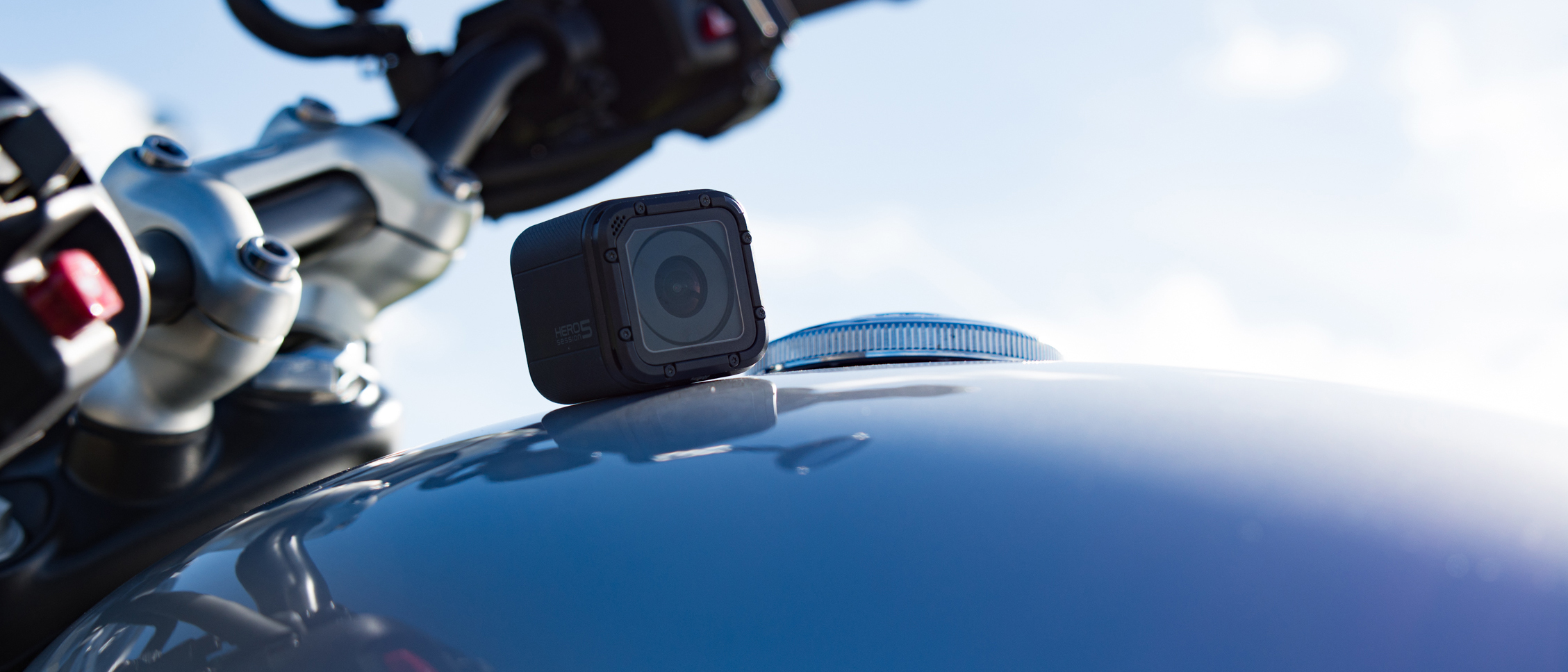TechRadar Verdict
Video quality is second to none, 10MP still imagery will be good enough for most, and the tiny package makes it the perfect companion on your travels. The lack of a replaceable battery is a downer, as is the slightly confusing one-button interface, but the beautifully crisp 4K footage easily makes up for this.
Pros
- +
Extremely portable
- +
Excellent video and image quality
- +
Robust, and waterproof to 10m without a case
- +
Lightweight
- +
Voice controlled
Cons
- -
Diminutive package is fiddly
- -
Controls are challenging
- -
Poor battery life
Why you can trust TechRadar
GoPro overhauled its range of action cameras last year, adding more features to its 'entry level' point of view (POV) devices and further improving its top spec cameras to cement its reputation as king of the action cams.
[Update: Since the launch of the Hero 5 Session, GoPro has not only launched the Hero 6 Black, but also the Hero (2018) and Hero 7 Black. If you're looking for the ultimate action camera, get the Hero 7 Black, but if you're on a budget, unless you really need the ultra compact proportions of the Hero 5 Session, you're probably better served getting the Hero 5 Black, which has seen a significant price reduction in recent months. If you can live without 4K and looking for an affordable action camera, the Hero (2018) is great choice.]
Granted, there are now plenty of rival offerings that aim to tempt buyers away from the biggest name in sports and action shooting, but few can compete with the level of features and image quality offered by the Californian brand.
The Hero5 Session sits in the middle of GoPro's current camera lineup, borrowing many elements from its bigger Hero5 Black brother (which has just been superseded by both the Hero6 Black and Hero7 Black), yet featuring the scaled-down simplicity and exterior packaging of the more affordable Hero Session.
It may sound confusing, and there's a big price disparity between the four cameras, but the key thing to note is that the Hero5 Session shoots in 4K at 30fps, like the Hero5 Black, while stills are captured at 10MP (as opposed to 12MP by the Hero5 Black) and it features GoPro's ProTune feature for easier post-production editing.
In short, it's easiest to think of the Hero5 Session as a Hero5 Black lite, albeit one without the handy rear touchscreen or the professional-grade performance.
GoPro Hero5 Session: features
- 4K video capture at 30fps
- 10MP still images
- No rear touch display
GoPro knows its audience, which is why it can get away with offering a number of cameras over a range of prices with very similar features.
But for those wanting professional touches, such as ultra-sharp image quality via an all-glass lens, excellent low light performance and 4K filming at 60fps, then the Hero6 Black is definitely the camera to plump for.
That said, the Hero5 Session still manages to cram a hefty amount into its diminutive shell, including the aforementioned 4K at 30fps video resolution, ProTune options and other pro-grade features, not to mention voice control and excellent smartphone connectivity.
It is a lot more expensive than the near identical-looking Hero Session, but that camera doesn't support 4K video, nor does it sport voice control or the Superview, Linear and Narrow fields of view.
Features-wise, though, it's more useful to compare the Hero5 Session to its bigger brother, because side-by-side there's very little to separate the two bar a slightly reduced frame rate at certain video resolutions, the lack of RAW and WDR still image files, and the much more user-friendly rear touchscreen display.
The small differences in quality will be difficult to spot for anyone using the camera on a casual basis, but the fact that the Hero5 Session doesn't have a rear screen or an interchangeable battery will be reason enough for those using their camera on a regular basis to jump to the more expensive Hero5 Black or Hero6 Black.

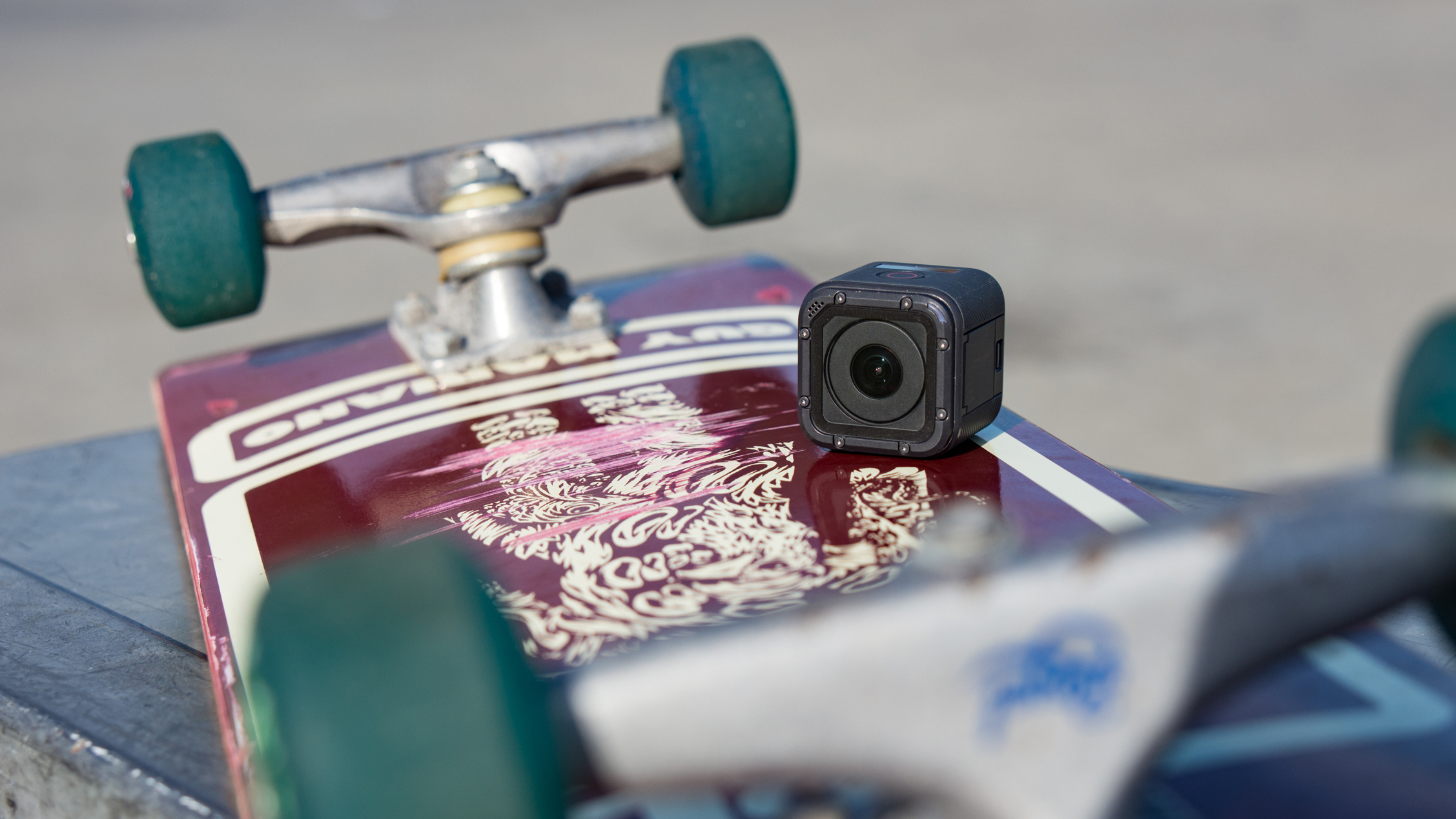
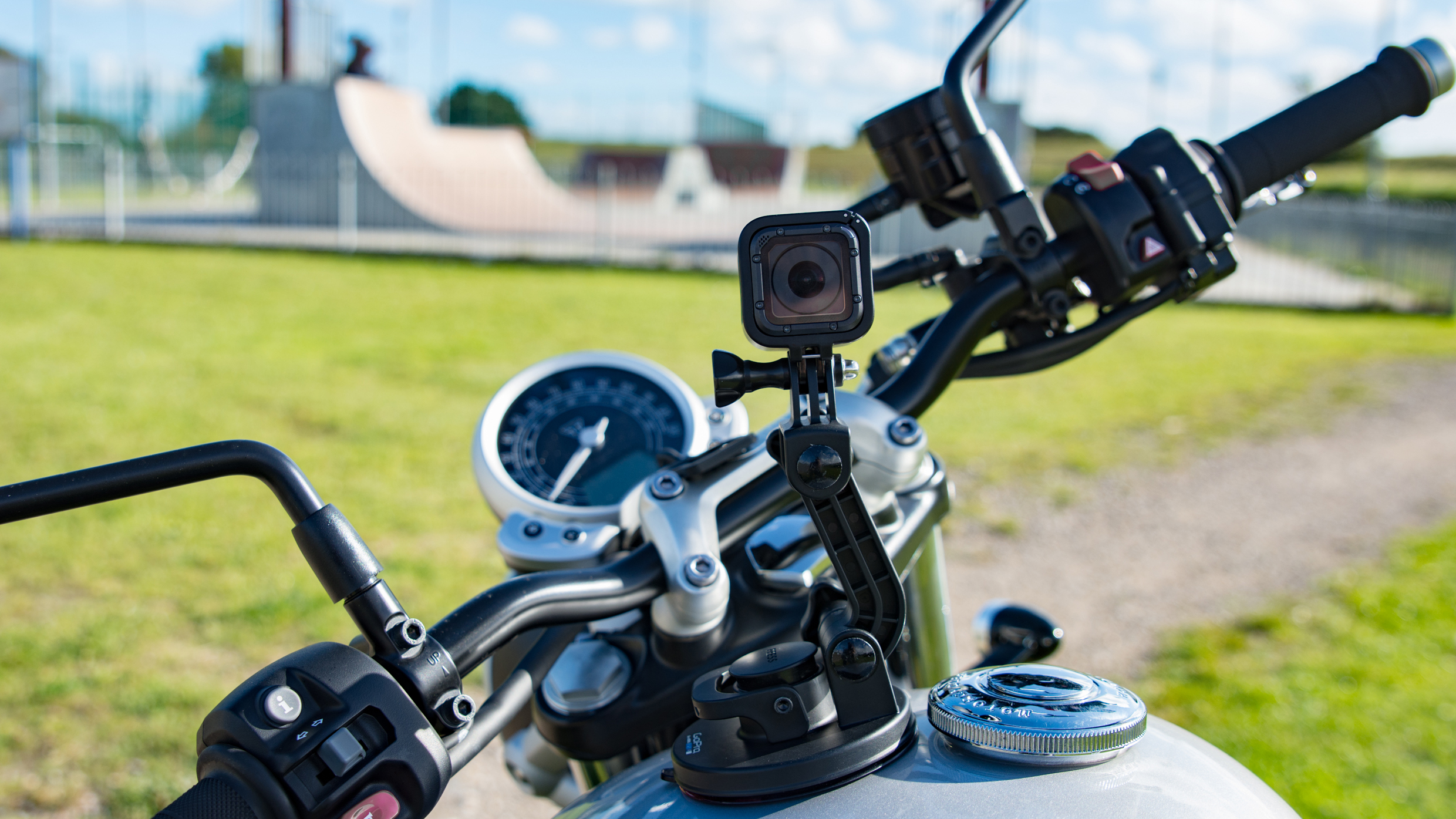
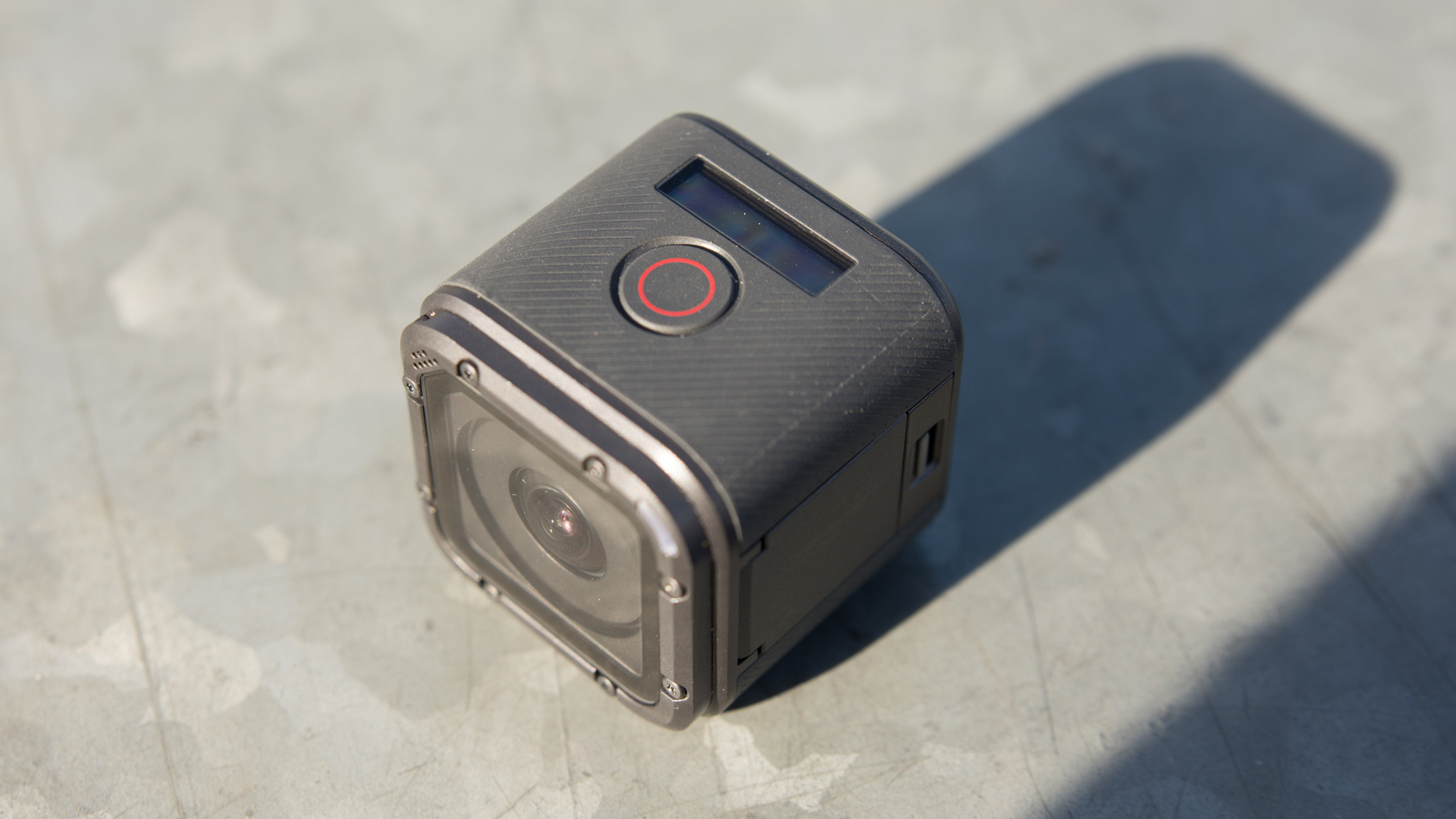
GoPro Hero5 Session: design and accessories
- Features just two buttons
- Simple design
- USB-C connection
The Hero5 Session really is a masterclass in simplicity, as this small cube (it's only marginally bigger than pool cue chalk) features just two buttons and one side flap that houses the USB-C port and MicroSD card slot.
The shutter button on the top also acts as a power-on switch, and will start recording video automatically (if the relevant settings are activated) when depressed.
A much smaller, and infinitely more finicky button on the rear scrolls through the various menus and settings on the camera.
It takes a little while to get used to one-button control, and there will likely be multiple shaky video clips of feet and sky captured as users accidentally record when they merely meant to power-up the device.
However, things are much simpler when the Hero5 Session is linked to GoPro's app, which acts as both the rear screen (for setting up shots) and as a hub for browsing menus and adjusting settings.
The Hero5 Session comes with a small exterior housing – it can't be mounted to anything without this
Just behind the big red shutter button is a small white-on-black display that displays the mode (video, photo, burst, etc), the number of files recorded, the battery level and whether voice control and Wi-Fi are activated.
If you don't have your phone to hand this is also the only screen via which you can adjust and navigate menus, which isn't exactly good news for anyone with imperfect vision, as it's so small, although it remains bright enough to use in the dark.
The Hero5 Session also comes with a small exterior housing – it can't be mounted to anything without this. But, unlike previous chunky plastic coverings, this is simply a thin plastic jacket that sports GoPro's recognizable mounting system at the bottom.
There's also a USB-C cable and a small selection of adhesive mounts to get you started, and in all honesty that's all that's really required with this miniature Hero.
The camera itself is so small and light that it's incredibly easy to stick it to the side of a bicycle helmet, for example, without the need for additional accessories.
Regardless, the camera's exoskeleton (GoPro calls it a frame) is compatible with the vast array of GoPro accessories, which cover everything from floating selfie sticks to headband mounts and much more.
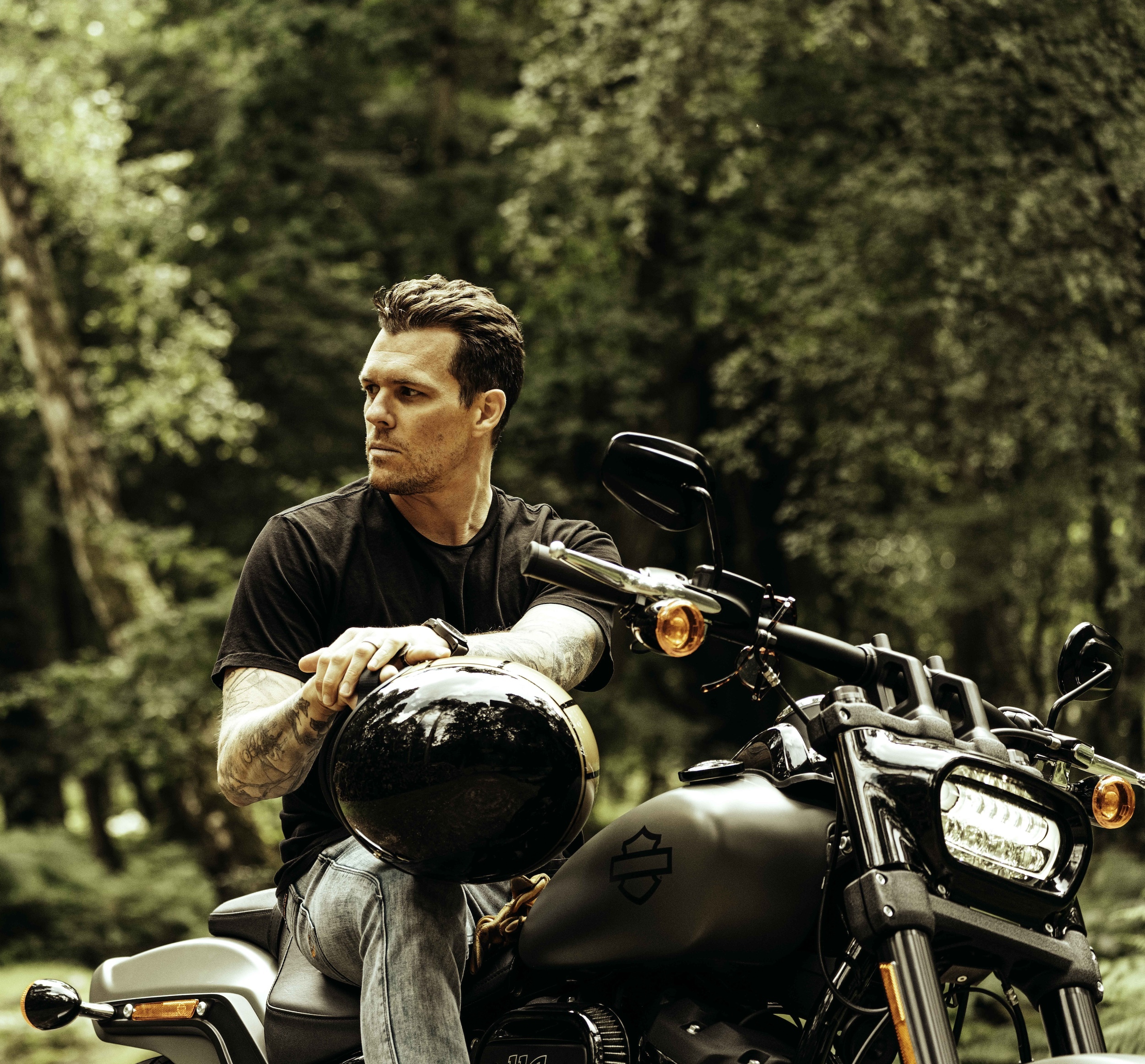
Leon has been navigating a world where automotive and tech collide for almost 20 years, reporting on everything from in-car entertainment to robotised manufacturing plants. Currently, EVs are the focus of his attentions, but give it a few years and it will be electric vertical take-off and landing craft. Outside of work hours, he can be found tinkering with distinctly analogue motorcycles, because electric motors are no replacement for an old Honda inline four.
